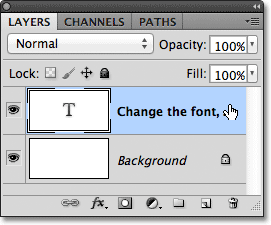Mastering Typography in Adobe Photoshop: An In-Depth Exploration of Photoshop Type Essentials

Introduction:
Typography is a cornerstone of visual communication, and in the realm of digital design, Adobe Photoshop stands as a powerhouse for manipulating and crafting text. In this extensive guide, we will embark on a comprehensive journey through the essential tools, features, and techniques that constitute the foundation of typography in Adobe Photoshop. From the basics of character and paragraph settings to advanced text effects and creative typography, this guide aims to equip designers with the knowledge and skills necessary to master the art of type in Photoshop.
Understanding the Basics:
- Character Panel: The Character Panel is the designer’s control center for manipulating individual characters within text. It offers a wealth of options including font selection, font style (bold, italic, etc.), size adjustment, leading (line spacing), tracking, and kerning. Familiarizing yourself with the Character Panel is crucial for achieving precision in character-level adjustments.
- Paragraph Panel: Complementing the Character Panel, the Paragraph Panel governs the layout and structure of text at the paragraph level. It provides controls for alignment, indentation, spacing between paragraphs, and hyphenation. Mastery of the Paragraph Panel is essential for creating well-organized and visually appealing text compositions.
- Type Tool: The Type Tool is the entry point for adding text to your Photoshop projects. It comes in two main varieties – the Horizontal Type Tool for standard left-to-right text and the Vertical Type Tool for vertical text arrangements. Understanding how to use and navigate the Type Tool is fundamental to working efficiently with text layers.
- Text Layers: Text in Photoshop is managed through text layers, allowing for non-destructive editing and easy repositioning. The Layers Panel is where you’ll find and manage your text layers, providing the ability to toggle visibility, apply layer styles, and organize your design elements.
Advanced Typography Techniques:
- Layer Styles: Layer Styles add depth and dimension to text layers, allowing for effects such as drop shadows, glows, bevels, and more. The Layer Styles panel is a treasure trove of options that can elevate your text designs by adding a touch of sophistication and visual interest.
- Blending Modes: Blending modes enable text layers to interact with the layers beneath them, creating diverse and visually striking effects. Experimenting with blending modes can lead to unique text compositions, allowing text to blend seamlessly with background elements.
- Smart Objects and Vector Text: Converting text layers into Smart Objects or vector shapes provides scalability without loss of quality. This is particularly useful when working on designs that may be resized or require precise adjustments.
- Creative Typography: Delving into creative typography involves experimenting with unique fonts, customizing letterforms, and exploring text effects. Photoshop offers a wide array of creative possibilities, including text warping, distortions, and transformations that can turn text into a visually captivating element of your design.
Practical Applications:
Understanding the essentials of Photoshop type is best accomplished through practical applications in various design scenarios.
- Web Design: In web design, effective typography enhances user experience. Applying the fundamentals of character and paragraph settings ensures readability, while creative typography can establish a brand’s identity.
- Print Design: In print materials such as brochures, posters, and business cards, mastering type essentials is crucial for maintaining clarity and visual appeal. Proper use of leading, kerning, and font selection contributes to a polished and professional print design.
- Branding and Identity: Typography is a key element in brand identity. Consistent use of fonts, colors, and styles across various materials reinforces brand recognition. Designers must leverage type essentials to create cohesive brand messaging.
- Social Media Graphics: Crafting engaging social media graphics requires an understanding of typography for impactful headlines, captions, and calls-to-action. Effective use of layer styles and creative typography can make your social media posts stand out.
Conclusion:
Mastering Photoshop type essentials is an indispensable skill for designers seeking to create visually compelling and effective designs. From the nuanced adjustments in the Character and Paragraph Panels to the advanced techniques of layer styles and creative typography, a thorough understanding of these tools empowers designers to communicate messages with clarity and creativity. As you embark on your typographic journey in Adobe Photoshop, remember that the art of type is a balance between technical precision and creative expression. With practice and exploration, you’ll find yourself seamlessly integrating type into your designs, transforming text into a powerful and captivating visual element. Happy designing!





